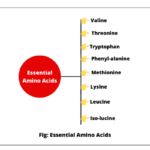30 Cell Cycle and Cell Division MCQ Quiz for Exams
Welcome to the Cell cycle and Cell division MCQ Quiz! This quiz consists of 30 multiple-choice questions that will test your knowledge of biology topics, such as cell cycle, cell division, and some miscellaneous.
Whether you’re a biology student, or preparing for the competitive exams, such as NEET, RRB, SSC CGL, IAS, IES, etc., this quiz will be a fun for you and enhance your knowledge of these topics! So, let’s begin from the question number 1! 👇
1. The term ‘cell cycle’ was first described by:
A. Robert Hooke
B. Howard and Pelc
C. Walther Flemming
D. Watson and Crick
b
In 1953, the term ‘cell cycle’ was first used and described by Howard and Pelc while studying cell division.
2. Which phase of the cell cycle is often referred to as the “resting phase”?
A. M phase
B. S phase
C. Interphase
D. Cytokinesis
c
Interphase was earlier called the “resting phase” because the cell is not visibly dividing (no chromosomal changes were observed under a microscope). However, it is metabolically very active and prepares the cell for division during this time.
3. Which of the following is the correct order of the interphase stages?
A. G₂ → G₁ → S
B. S → G₁ → G₂
C. G₁ → S → G₂
D. G₂ → S → G₁
c
Interphase occurs in a specific sequence: G₁ → S → G₂.
4. Which phase of interphase is responsible for cell growth and preparation for DNA replication?
A. G₂ phase
B. M phase
C. G₁ phase
D. S phase
c
G₁ phase (Gap 1) is the first stage of interphase in which the cell grows, synthesizes proteins, organelle duplication, and prepares for DNA replication, but DNA has not yet been duplicated.
5. DNA replication occurs during which interphase phase?
A. G₁ phase
B. G₂ phase
C. S phase
D. M phase
c
The S (Synthesis) phase is the second stage of interphase in which DNA replication occurs. The DNA content doubles, but the number of chromosome remains the same. Each chromosome is copied, forming two identical sister chromatids. After mitosis, each daughter cell receives an identical copy of genetic material.
6. In which interphase stage does the cell prepare for mitosis by synthesizing proteins and organelles?
A. S phase
B. G₂ phase
C. G₁ phase
D. None of the above
b
G₂ phase (Gap 2) is the third stage of interphase in which the cell undergoes final preparation for mitosis by producing proteins, enzymes, and checking for DNA damage.
7. Which of the following activities is not performed by a cell during interphase?
A. DNA replication
B. Protein synthesis
C. Cell growth and organelle duplication
D. Chromosome condensation into visible structures
d
Chromosome condensation occurs during prophase of mitosis/meiosis, not interphase.
8. What percentage of the total cell cycle time is generally spent in interphase?
A. 10%
B. 20%
C. 50%
D. 90%
d
Interphase is the longest phase of the cell cycle, made up of G₁, S, and G₂ phases. A cell spends about 90–95% of its time in interphase, where it grows, performs normal functions, prepares for cell division, and replicates DNA. The M phase (mitosis) is relatively short and occupies only about 5–10% of the entire cell cycle.
9. What is called the process by which a parent cell divides into daughter cells?
A. Photosynthesis
B. Cell division
C. Cell respiration
D. DNA translation
b
Cell division is the process through which a parent cell splits to form one or more daughter cells. The cell that undergoes division is known as the parent cell.
10. What is mitosis?
A. Division of cytoplasm only
B. Division of a nucleus into four cells
C. Equal division of duplicated chromosomes into two daughter cells
D. Fusion of gametes
c
Mitosis is the process of cell division in which duplicated chromosomes are equally distributed into two identical daughter cells. It is a continuous process but is conventionally divided into five phases: Prophase, Prometaphase, Metaphase, Anaphase, and Telophase. This is list of the phases of mitosis in order.
11. How many daughter cells are produced from one parent cell during mitosis?
A. One
B. Two
C. Three
D. Four
b
In mitosis, a single parent cell divides to form two genetically identical daughter cells.
12. Which of the following statements is true about daughter cells in mitosis?
A. They have half the DNA of the parent cell.
B. They are genetically different from the parent cell.
C. They are genetically identical to each other and the parent cell.
D. They do not contain a nucleus.
c
Mitosis produces clones of the parent cell — each with identical DNA and chromosome number.
13. In which type of cell division does one parent cell produce four non-identical daughter cells?
A. Mitosis
B. Binary fission
C. Budding
D. Meiosis
d
In meiosis, a parent cell produces four haploid daughter cells that are genetically different from each other.
14. In which phase of mitosis do chromosomes align at the cell’s equator?
A. Anaphase
B. Prophase
C. Metaphase
D. Telophase
c
During metaphase, chromosomes align at the metaphase plate.
15. Which phase of mitosis is characterized by the condensation of chromatin into visible chromosomes?
A. Prophase
B. Metaphase
C. Anaphase
D. Telophase
a
In prophase, chromatin condenses into visible chromosomes, the nuclear envelope starts to disintegrate, and spindle fibers begin forming from the centrosomes.
16. During which phase do sister chromatids separate and move toward opposite poles?
A. Prophase
B. Metaphase
C. Anaphase
D. Telophase
c
In anaphase, the centromeres split and chromatids are pulled to opposite ends.
17. During which phase, the nuclear envelope reforms?
A. Telophase
B. Prophase
C. Anaphase
D. Metaphase
a
In telophase, the chromosomes decondense back into chromatin, and nuclear envelopes re-form around each set of chromosomes, creating two separate nuclei. The spindle fibers disassemble, and the cell is nearly ready to complete division.
18. Which of the following structure is responsible for chromosome movement during cell division?
A. Centrioles
B. Spindle fibers
C. Nuclear pores
D. Golgi apparatus
b
During cell division, spindle fibers (microtubules) attach to kinetochores to align and separate chromosomes.
19. Which of the following is the shortest phase of mitosis?
A. Prophase
B. Metaphase
C. Telophase
D. Anaphase
d
Anaphase is the shortest phase of mitosis because chromatids separate rapidly once spindle fibers shorten.
20. If a cell has 20 chromosomes, how many chromosomes will each daughter cell have after mitosis?
A. 10
B. 20
C. 30
D. 40
b
Mitosis produces genetically identical daughter cells with the same chromosome number (2N → 2N).
21. What is the process of cell division in prokaryotes called?
A. Mitosis
B. Meiosis
C. Budding
D. Binary fission
d
Prokaryotes (e.g., bacteria) divide through binary fission, which is a simple asexual reproduction process.
22. How many daughter cells are produced in binary fission?
A. 1
B. 2
C. 4
D. 8
b
In binary fission, a single parent cell divides into two identical daughter cells.
23. Which of the following is replicated before binary fission begins?
A. Mitochondrial DNA
B. Single circular chromosome
C. Linear chromosomes
D. Ribosomal RNA
b
Prokaryotes have one circular chromosome that replicates before the cell splits.
24. In which type of cells does meiosis occur?
A. Somatic cells
B. Gem cells
C. Stem cells
D. Neurons
b
Meiosis is a process that occurs in germ cells (spermatogonia in testes and oogonia in ovaries) to produce haploid gametes (sperm and eggs), which are essential for sexual reproduction.
25. How many daughter cells are formed from a single parent cell at the end of meiosis?
A. 2
B. 3
C. 4
D. 8
c
At the end of meiosis, four haploid daughter cells are formed from a single parent cell.
26. Meiosis is essential for sexual reproduction because it:
A. Doubles the DNA content
B. Produces genetically identical cells
C. Maintains chromosome number across generations
D. Occurs in somatic cells
c
Meiosis is essential for sexual reproduction because it reduces the number of chromosomes in gametes by half.
27. A cell with 2N = 46 chromosomes will produce gametes with:
A. 23 chromosomes
B. 46 chromosomes
C. 92 chromosomes
D. 12 chromosomes
a
Meiosis halves the chromosome number (2n = 46 → n = 23).
28. How many functional eggs are produced from one oocyte in human females?
A. 1
B. 2
C. 3
D. 4
a
Oogenesis yields 1 egg + 3 polar bodies (polar bodies degenerate).
29. A cell with 2N = 46 chromosomes yields __ chromosomes after mitosis.
A. 23
B. 46
C. 92
D. 12
b
Mitosis preserves chromosome number (2N→2N). Meiosis would reduce it to N=23.
30. Where does meiosis occur in humans?
A. Skin cells
B. Liver cells
C. Testes and ovaries
D. All body cells
c
During cell division, meiosis produces gametes (sperm and egg cells), and is restricted to the gonads (testes in males and ovaries in females) for the purpose of gamete production.
Quiz Results
Total Questions: 0
Correct Answers: 0
Incorrect Answers: 0
Score: 0%







